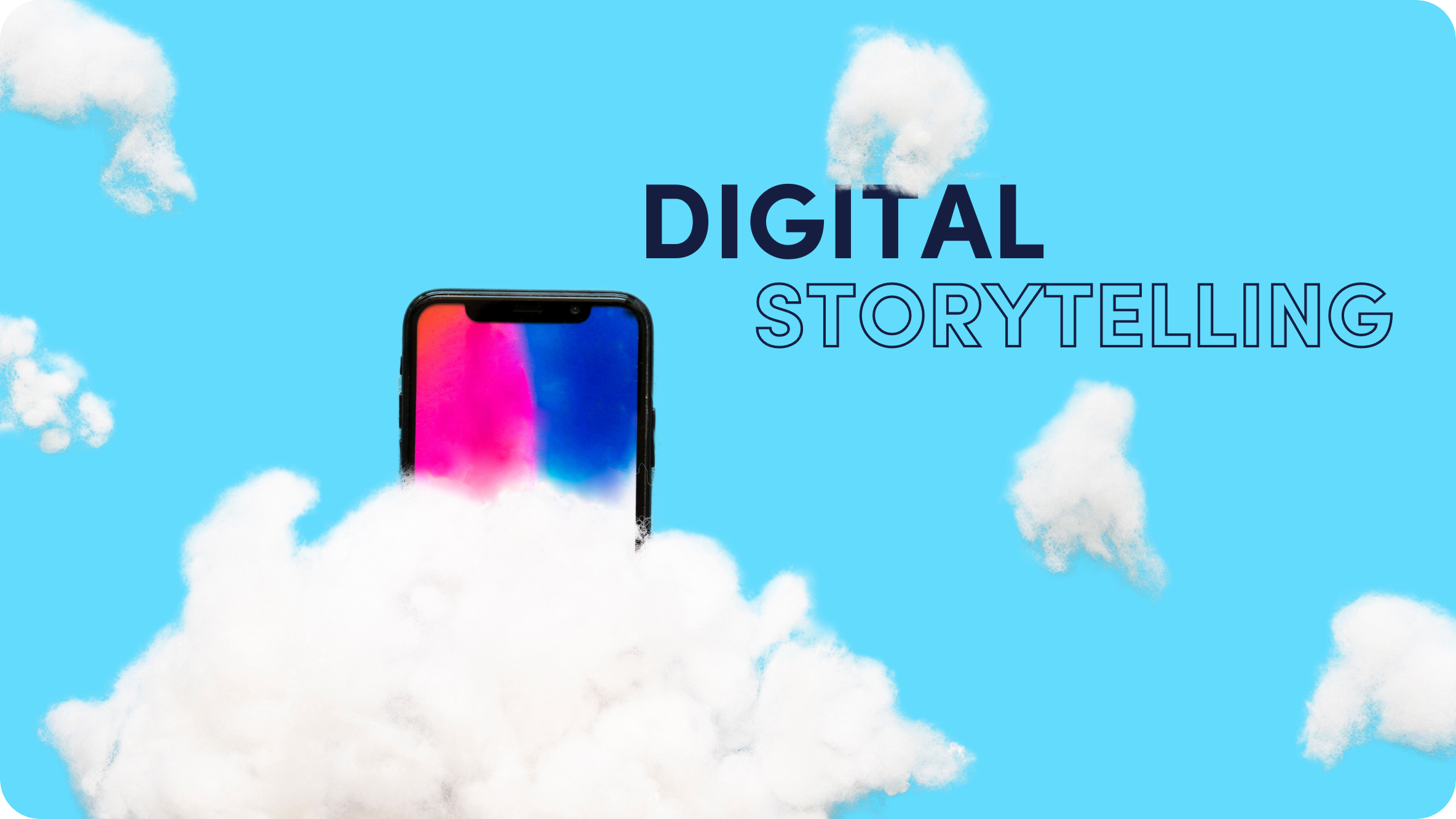Memorable Moments: How Brands Can Elevate Digital Storytelling on the Open Web

People love stories, in every format. Including digital storytelling
Each year, an estimated 2.2 billion books are sold worldwide.
A story can be as long as Harry Potter (the fifth installment is over 760 pages!).
Or it can be as short as a 30-second digital ad.
For brands that need to stand out in a crowded marketplace, digital storytelling is a powerful advertising technique. But it takes a certain skill to do it right.
With Outbrain’s tech-driven approach to storytelling, you can create a distinctive brand presence that resonates with your target audience.
But first, like all good stories, let’s start at the beginning.
What is Digital Storytelling?
Storytelling is the age-old art of weaving narratives that captivate and resonate across cultures and generations. Modern-day digital storytelling behaves similarly to traditional storytelling, even if it looks and feels different.
Think about the latest Instagram Story from your favorite yoga studio. Or Super Bowl commercials, where brands tell their stories in less than 2 minutes in the most expensive advertising spots of the year. Although the budgets for an Instagram ad vs a Super Bowl ad could not be more different, both these digital storytelling examples have a real impact on brand awareness.
Technological advancements have evolved digital storytelling into more immersive, interactive, and measurable experiences. Brands today have unprecedented potential at their fingertips to forge deeper connections with their consumers by understanding what stories they want to see and presenting captivating narratives that keep them engaged.
How exactly does this happen? With digital storytelling, combining art and science – creativity with data – in a process known as “data-driven design”.
Data-Driven Design: Creating Powerful Digital Stories Via Data
The cornerstone of success for brand advertising campaigns is the creative – the blend of visuals, copy, and sound that makes up the ad experience. According to Nielsen research, the quality of creative drives 65% of brand uplift.
Ad creatives are powerful when they transform dry information (say, about a new product or feature) into compelling experiences that captivate, inform, and inspire viewers.
Expanding this power even further is possible through data-driven design.
Data-driven design is the practice of using historical analytics and data-based insights to guide the creative design process.
By measuring creative interactions, and analyzing engagement and emotional impact, brands get to know their audience in a much deeper way. What digital stories do they enjoy? Which ad creatives stir their minds and souls? Data-driven design turns audiences into active contributors to the ad design process. This is nothing less than a revolution in the digital storytelling ecosystem.
Leica case study: Data-driven design in action
Leica, the world-leading camera brand, wanted to create custom ad experiences that fuse video storytelling and product-led narrative to promote their entertainment system, the CINE1.
So they turned to Onyx Brand Studio, pioneers in data-driven design and digital storytelling, to launch an interactive creative-first campaign.
More than 38% of viewers said they preferred the interactive experience mixing in compelling visuals and video assets compared to the static ad. As a result, respondents were 1.5x more likely to choose Leica after exposure, while +33% were more likely to say they would buy the CINE1 entertainment system.
As Leica demonstrates, putting users at the center of digital storytelling allows brands to carve out a distinctive identity and build a loyal following, leading to optimal outcomes.
How to Do Data-Driven Design? With a Skilled Partner
To do digital storytelling with data-driven design, you need a partner with significant creative expertise, access to vast data, and powerful technical capabilities.
Together, these form a powerhouse for data-driven design to help you excel in digital storytelling.
Not everyone has the data and expertise to truly understand which creative elements will deliver the best performance and efficiency to reach a particular campaign goal.
Onyx Brand Studio does. The digital storytelling design house leverages data and insights to support creative development, proving that innovative strategies lead to impressive outcomes and set new standards in the digital advertising industry.
So, how can you work with a data-driven design partner to achieve optimal brand success?
It begins with understanding the campaign goal and target audiences. Then, build ads with interactive digital features that the audiences will love, and ensure they are tailored to those goals.
Whether trying to capture attention, drive engagement, or generate sales, brands can use data-driven design to optimize their strategies for specific audience demographics, including gender and age groups.
Brands that harness the power of digital storytelling to engage with accurately targeted audiences can see a remarkable boost in their impact, brand recall, and purchase intent.
Creating unforgettable experiences is key; so is finding the right partner who can advise and support you in this process.
Elvie case study: Working with a data-driven design partner
Lifestyle brand Elvie joined with Onyx Brand Studio experts for an in-person workshop to exchange audience insights and user behavioral data to support the initial work on the campaign. This was crucial to drive the creative process and achieve the desired audience engagement.
The award-winning collaboration led to the data-driven design of an interactive digital ad experience that allowed users to interact with Elvie’s new ‘Stride’ product in several ways: swipe through different cards to see reviews, watch a product-featured video, and interact with the digital experience in real-time.
The results speak for themselves:
- 11X full video completion rate compared to social and display
- 2.3X average video view time compared to social
- -30% bounce rate vs all paid channels, demonstrating true user interest and engagement.
Elvie’s digital storytelling success is a case in point about how to work with a data-driven design partner to get outstanding results.
In fact, Elvie has been working with Outbrain for years on award-winning creatives. This long-term partnership has enabled the development of data-driven creative campaigns that drive real outcomes for the fem-tech brand.
Data-Driven Design: Access Powerful Insights about Audience Behavior
Data-driven design is also about incorporating the user in the creative process. In the short term, this enables brands to understand and leverage what resonates with their target audiences to improve outcomes today. In the longer term, it allows brands to gather valuable insights about their audiences to help inform future creative strategies.
The more interactive the creative, the more in-depth the tracking and analysis can be. Some examples include:
- Interactions with customizable hotspots (ie. which video the user selected or item they clicked on out of several options)
- Video plays or completions
- Interactions with animations, canvases, or games
- Click-throughs to landing pages
- “Add to cart” interactions from within the ad
Interactive formats allow advertisers to track custom events like these and many more, and gain a deeper understanding of consumer preferences with each impression.
So, this is how data-driven design comes together: digital storytelling builds the compelling narrative that draws the audience in, interactive experiences support audience engagement and interaction with the ad, and powerful tracking capabilities deliver the actual, real-time data about how the audience is responding to the ad.
This is the journey of data-driven design, and it empowers digital ads that deliver measurable outcomes.
Doritos case study: the power of ‘data’ in data-driven design
In a mobile campaign with Onyx Brand Studio, Doritos tested swipe-and-click creatives, which revealed that swiping resonated more effectively with consumers. Swipe-and-click interactions led to 10X higher engagement compared to just clicking.
Doritos also tested an opt-in video format that demonstrated a 68% start rate and stronger video completion compared to automatic video play. This showed that audiences favor having control over their decision to view content.
With data-driven insights, Doritos can now make data-driven choices about creative design and get better results from digital ad campaigns.
Final Word: Data-Driven Storytelling Drives Emotional Impact
Data-driven design goes beyond impressions and viewability. It allows advertisers to measure actual user interactions with ads and understand the audience’s emotional response to creatives. Remember, emotion drives action. A digital story that compels someone to swipe, watch, play, or click has triggered an emotion that is strong enough to make them want to act. In today’s cut-throat digital marketplace, that is the most powerful information that brand advertisers can have.
Insights like these enabled a famous broadcast TV channel to achieve +36% brand recall, +38% brand positivity, and +68% purchase intent with their Onyx Brand Studio interactive creatives. In a post-campaign analysis, users defined the ad experiences as “thrilling” and “innovative”.
These insights and many more could not be possible with traditional ads.
The constant learning of data-driven design feeds the creative process and empowers advertisers to test theories, discover user emotions and behaviors, and ensure maximum outcomes for their digital campaigns.
It’s time to move on from digital ads.
And it’s time to rethink what’s possible with Onyx Brand Studio.


